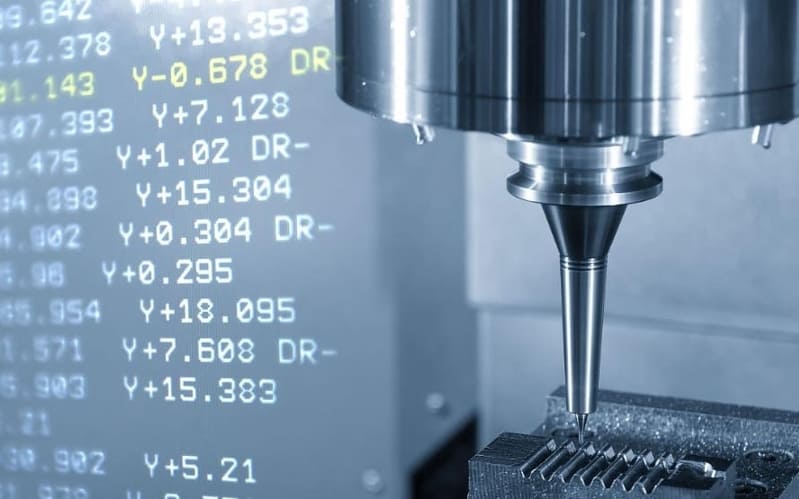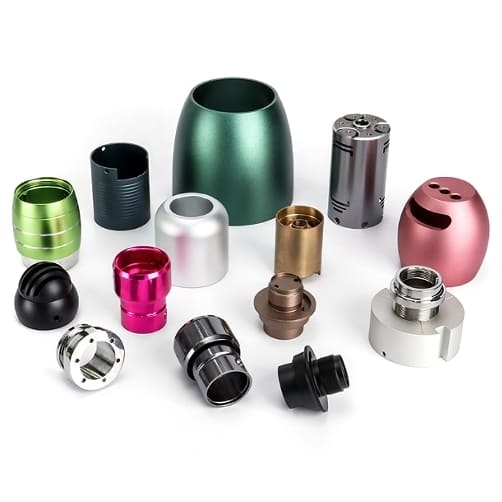
As a CNC (Computer Numerical Control) enthusiast and professional, I’ve spent countless hours immersed in the world of G-code and M-code. If you’re just starting your journey or looking to deepen your understanding, you’ve come to the right place! This article will explore CNC programming languages, focusing on the crucial roles of G-code and M-code in bringing your designs to life.
What is CNC Programming?
CNC programming is the process of creating a set of instructions that a CNC machine follows to manufacture a part. These instructions tell the machine where to move, how fast to move, and what operations to perform. Think of it as a detailed recipe for your machine, ensuring precision and repeatability.
Why is CNC Programming Important?
CNC programming is vital for several reasons:
- Precision: CNC machines can achieve incredible accuracy, far beyond the capabilities of manual machining.
- Repeatability: Once a program is created, the machine can produce identical parts repeatedly with minimal variation.
- Efficiency: CNC machines can run unattended for extended periods, increasing productivity.
- Complexity: CNC allows for complex geometries and intricate designs that would be difficult or impossible to create manually.
G-Code: The Language of Motion
G-code, short for “Geometric Code,” is the primary programming language used to control the movements of a CNC machine. It’s a series of commands that tell the machine where to move the cutting tool, how fast to move it, and along what path.
Common G-Code Commands and Their Functions
Here’s a table outlining some of the most frequently used G-code commands:
| G-Code | Function | Description | Example |
|---|---|---|---|
| G00 | Rapid Traverse | Moves the tool to a specified location at the machine’s maximum speed. Used for non-cutting movements. | G00 X10 Y20 Z5 |
| G01 | Linear Interpolation | Moves the tool in a straight line at a specified feed rate. Used for cutting operations. | G01 X15 Y25 F100 |
| G02 | Circular Interpolation, Clockwise | Moves the tool in a circular arc in a clockwise direction. Requires specifying the center of the arc and the radius. | G02 X30 Y40 I5 J0 F100 |
| G03 | Circular Interpolation, Counter-Clockwise | Moves the tool in a circular arc in a counter-clockwise direction. Requires specifying the center of the arc and the radius. | G03 X30 Y40 I5 J0 F100 |
| G20 | Inch Units | Specifies that the program uses inches as the unit of measurement. | N/A |
| G21 | Millimeter Units | Specifies that the program uses millimeters as the unit of measurement. | N/A |
| G90 | Absolute Programming | Interprets coordinates as absolute positions relative to the machine’s origin. | N/A |
| G91 | Incremental Programming | Interprets coordinates as incremental distances from the tool’s current position. | N/A |
Understanding G-Code Syntax
G-code syntax generally follows a structured format. Each line of code typically begins with an “N” number (line number), followed by one or more G-codes and associated parameters. For example:
N10 G01 X10.5 Y5.2 Z-2.0 F150
N10: Line number 10G01: Linear interpolation (cutting move)X10.5: Move to X-coordinate 10.5Y5.2: Move to Y-coordinate 5.2Z-2.0: Move to Z-coordinate -2.0F150: Feed rate of 150 units per minute
M-Code: The Miscellaneous Commands
M-code, or “Miscellaneous Code,” controls various machine functions beyond movement. These codes handle tasks like starting and stopping the spindle, turning coolant on and off, and changing tools.
Common M-Code Commands and Their Functions
| M-Code | Function | Description | Example |
|---|---|---|---|
| M03 | Spindle Start, Clockwise | Starts the spindle rotating in a clockwise direction. | M03 S1000 |
| M04 | Spindle Start, Counter-Clockwise | Starts the spindle rotating in a counter-clockwise direction. | M04 S1000 |
| M05 | Spindle Stop | Stops the spindle. | M05 |
| M06 | Tool Change | Initiates a tool change. | M06 T02 |
| M08 | Coolant On | Turns the coolant pump on. | M08 |
| M09 | Coolant Off | Turns the coolant pump off. | M09 |
| M30 | Program End | Indicates the end of the program and resets the machine.. | M30 |
Integrating M-Code into Your Programs
M-codes are integrated into your G-code programs to control machine functions at specific points in the machining process. For instance, you might use M06 to change to a different cutting tool, M03 to start the spindle before a cutting operation, and M08 to turn on the coolant to keep the tool and workpiece cool.
The Relationship Between G-Code and M-Code
G-code and M-code work together harmoniously to create a complete CNC program. G-code dictates the tool’s movements and cutting paths, while M-code manages the auxiliary functions that support the machining process.
Example of G-Code and M-Code in Action
Let’s consider a simple example of facing a block of material:
N10 G21 ; Metric Units
N20 G90 ; Absolute Programming
N30 M06 T01 ; Tool Change to Tool 1
N40 M03 S1000 ; Spindle Start, Clockwise at 1000 RPM
N50 G00 X-10 Y0 Z5 ; Rapid Traverse to Starting Position
N60 G01 Z-1 F100 ; Feed Down to Cutting Depth
N70 G01 X110 F150 ; Face the Block in X-Axis
N80 G00 Z5 ; Retract Tool
N90 M05 ; Spindle Stop
N100 M30 ; Program End
In this example, you can see how G-code and M-code commands are combined to perform a specific machining task.
Tips for Writing Effective CNC Programs
Here are some tips that I’ve picked up over the years for writing effective CNC programs:
- Start Simple: Begin with basic programs and gradually increase complexity as you gain experience.
- Use Comments: Add comments to your code to explain what each section does. This makes it easier to understand and modify later.
- Visualize the Toolpath: Before running the program on the machine, use a CNC simulator to visualize the toolpath and catch any potential errors.
- Test Thoroughly: Always test your programs in a safe environment before running them on valuable materials.
- Follow Machine Safety Guidelines: Adhere to all safety guidelines and procedures to prevent accidents and damage to the machine.
“CNC programming is not just about writing code; it’s about understanding the machining process and using that knowledge to create efficient and accurate programs.”
Common Mistakes to Avoid
Even experienced CNC programmers make mistakes from time to time. Here are a few common pitfalls to watch out for:
- Incorrect Units: Mixing up inches and millimeters can lead to significant errors.
- Missing or Incorrect Tool Offsets: Properly setting tool offsets is crucial for accurate machining.
- Rapid Traverse Collisions: Using G00 (rapid traverse) too close to the workpiece can cause collisions.
- Unclear or Missing Comments: Not commenting your code makes it difficult to understand and maintain.
- Ignoring Safety Guidelines: Neglecting safety precautions can lead to accidents and injuries.
Resources for Learning More
There are numerous resources available to help you learn more about CNC programming:
- Online Courses: Platforms like Coursera, Udemy, and Skillshare offer comprehensive CNC programming courses.
- Books: There are many excellent books on CNC programming, G-code, and M-code.
- Online Forums: CNC forums and communities are great places to ask questions and learn from other programmers.
- CNC Simulators: CNC simulators like CAMotics, CNCSimulator, and NCPlot allow you to test your programs in a virtual environment.
Here are some online resources:
- Online forums: Practical Machinist, CNC Zone
- Software and simulators: Fusion 360, CAMotics
- Educational websites: Titans of CNC, NYC CNC
Conclusion
Mastering G-code and M-code is an essential skill for anyone involved in CNC machining. By understanding the fundamentals of these programming languages and following best practices, you can create efficient, accurate, and safe CNC programs that bring your designs to life. So, dive in, experiment, and never stop learning!
FAQs
Is G-code the same for all CNC machines?
While the core G-code commands are generally consistent across different CNC machines, there may be some variations in machine-specific codes and functions. Always refer to the machine’s programming manual for detailed information.
Do I need to know G-code to use CAD/CAM software?
While CAD/CAM software can generate G-code automatically, understanding G-code is still beneficial for troubleshooting, optimizing programs, and making manual adjustments when necessary.
What is the difference between absolute and incremental programming?
In absolute programming (G90), coordinates are interpreted as absolute positions relative to the machine’s origin. In incremental programming (G91), coordinates are interpreted as distances from the tool’s current position.
How important is it to use comments in my CNC programs?
Using comments is extremely important for improving the readability, maintainability, and understandability of your CNC programs. Comments make it easier to debug and modify your code later.
What safety precautions should I take when working with CNC machines?
It’s crucial to follow all safety guidelines provided by the machine manufacturer. This includes wearing appropriate safety gear, ensuring the machine is properly grounded, and understanding emergency stop procedures.
